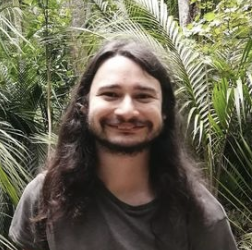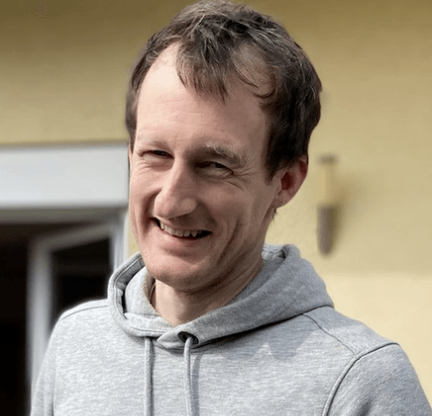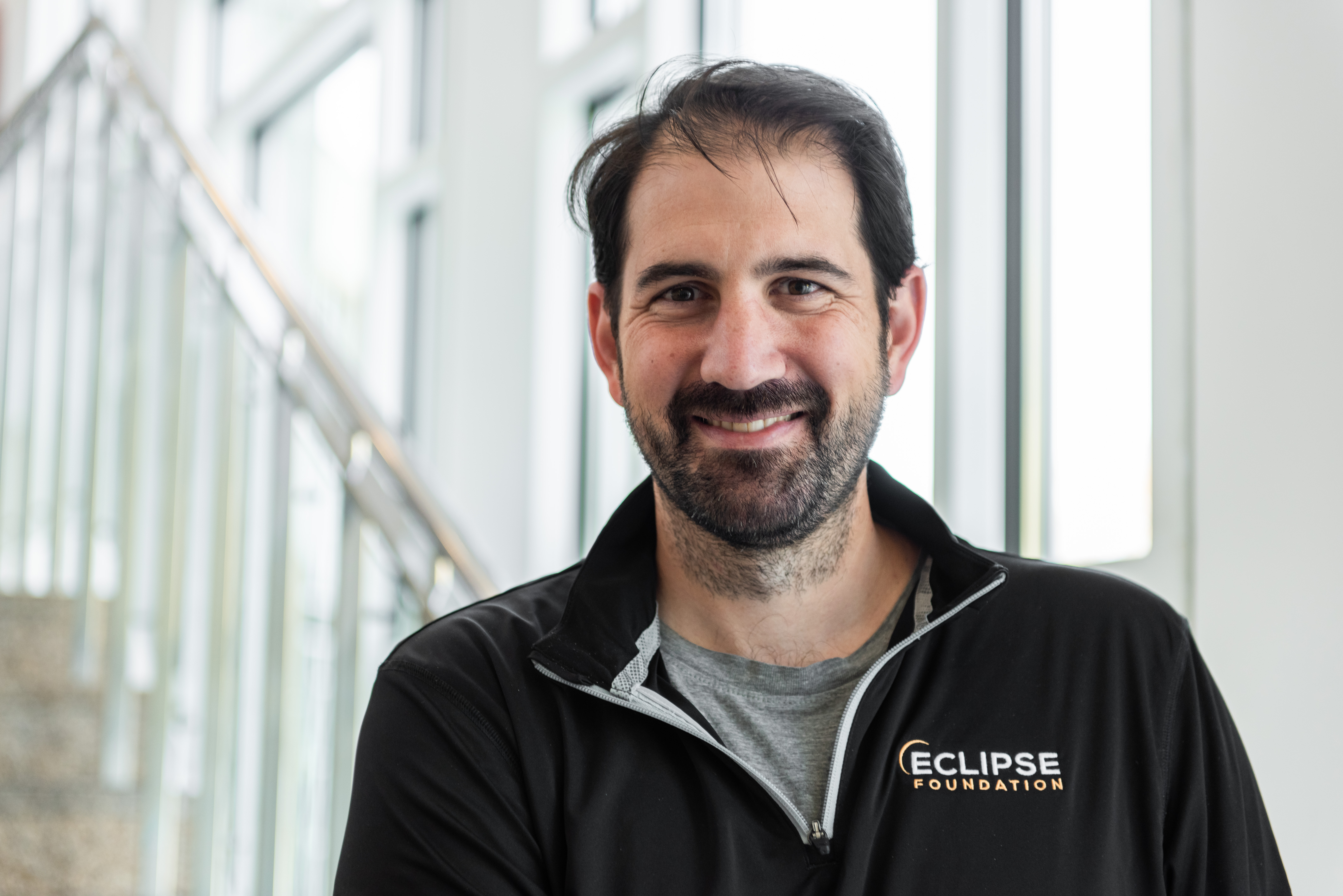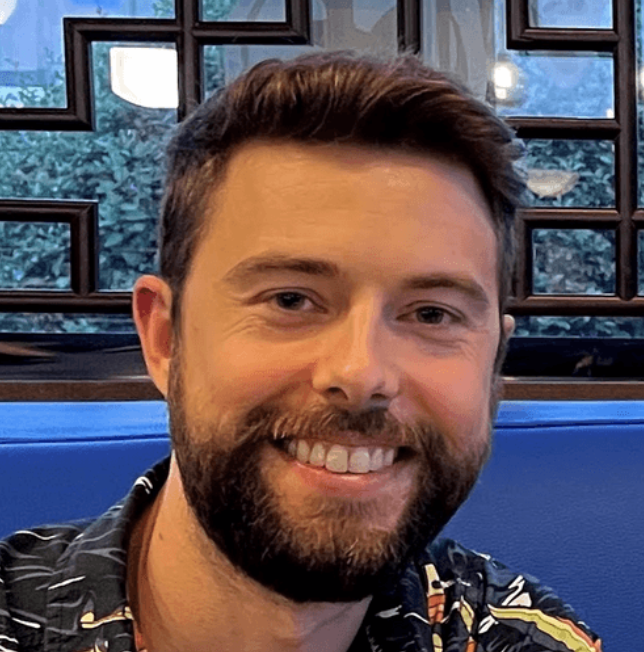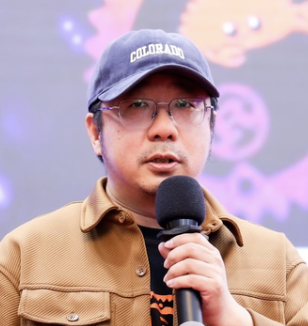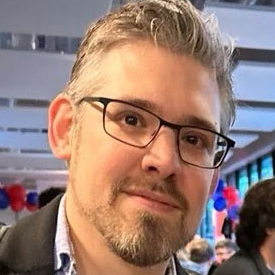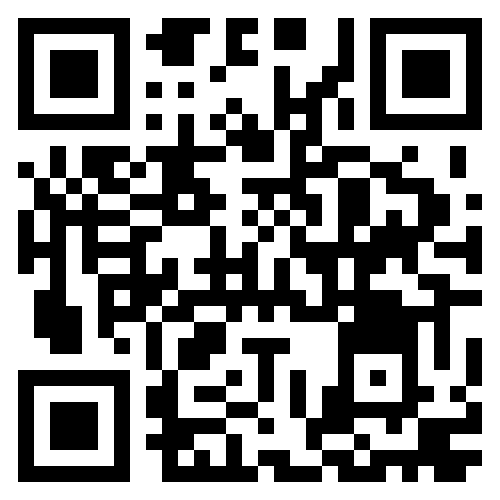GOSIM Schedule
may 6th
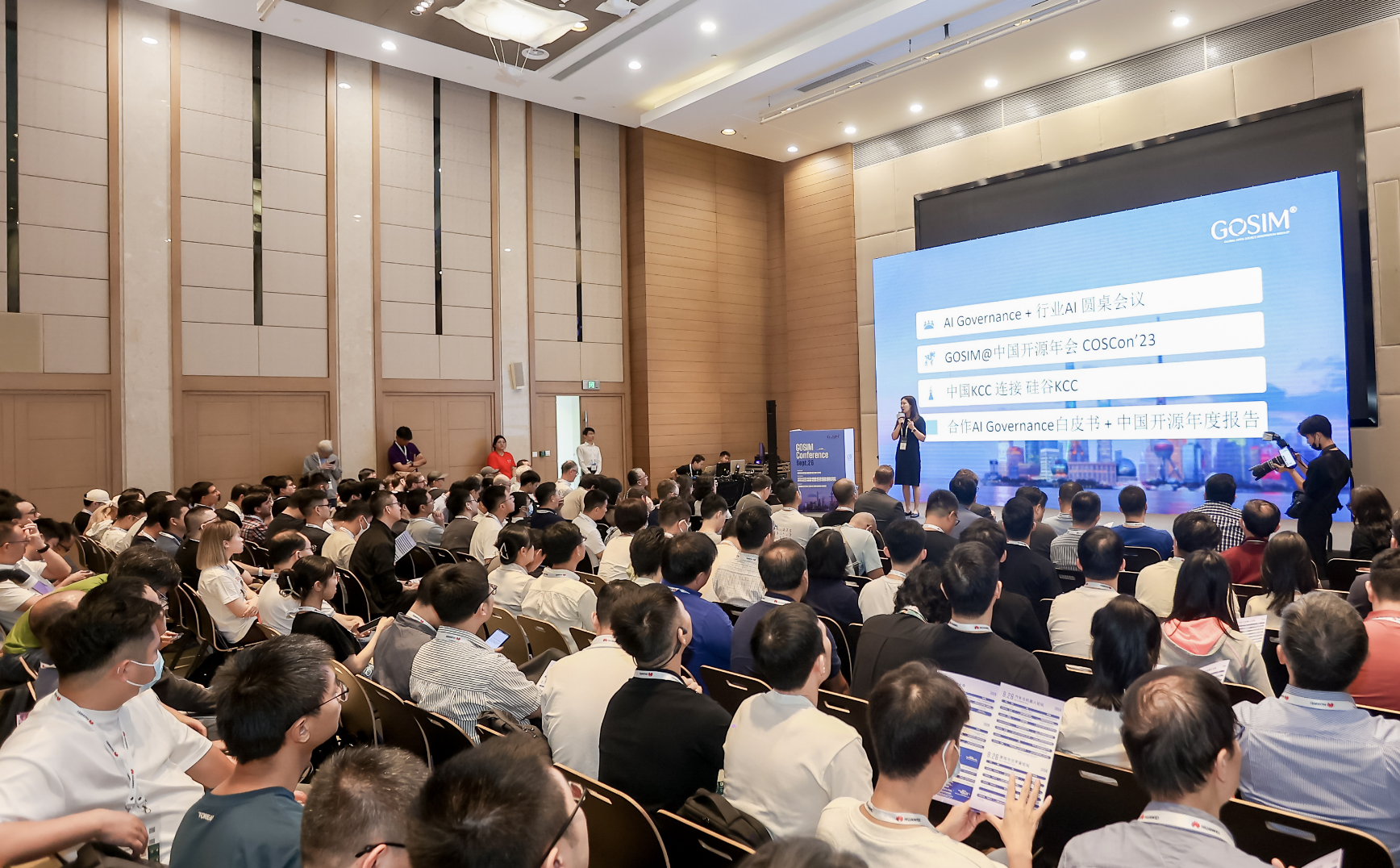
Schedule
AI & Agents
World leading researchers sharing insights on AI and Agents
9:00
9:40
Opening Keynote: The End of the Paper Internet
Opening Keynote: The End of the Paper Internet
Whenever new technologies
are introduced, for a time they imitate the
old technology they are replacing before evolving into their true
form. The introduction of book printing changed the world: information
became more available, and much more affordable, and a whole new
infrastructure and economy was created for the distribution of
information. It also changed the ownership of information, from the church, who
were the source of all books before the printing press, and this in
turn created great turmoil as new thought patterns emerged. But for 50 years after the
printing press was invented, books imitated
manuscripts, before finally becoming what we now understand as books. The internet in
Europe is 36 years old this year. In very similar ways
it has changed the world: information is more available and cheaper,
and there is a whole new infrastructure and economy to support it.
Similarly it is creating a new turmoil as we deal with the changing
way that people obtain information. But also similarly, the internet is still imitating
pre-internet
media: it could be described as paper documents without the paper;
only the paper has been digitised away. So what should the internet really be like, and
can we expect it to
emerge in the next 15 years?
10:00
Fostering Responsible AI: Empowering Openness and Community Collaboration
Fostering Responsible AI: Empowering Openness and Community Collaboration
In the realm of Generative
Artificial Intelligence (GenAI), the pursuit of responsible innovation hinges upon a
steadfast dedication to openness and community collaboration. This talk illuminates the
indispensable role of these principles in guiding GenAI development towards ethical and
accountable outcomes.
We delve into the transformative influence of openness and community collaboration on the
very fabric of GenAI systems. Through the exchange of knowledge, diverse viewpoints, and
collective wisdom, we navigate the landscape of building AI systems with transparency,
thereby laying a solid groundwork for responsible AI practices.
Central to our discourse is the introduction of the Model Openness Framework (MOF) crafted
by Generative AI Commons within LF AI and Data. The MOF serves as a ranked classification
system designed to evaluate all machine learning (ML) models, providing a structured
approach to promote transparency and accountability in GenAI development.
Join us on a journey to unlock the full potential of Generative AI through the empowerment
of open collaboration and transparency. Together, we accelerate the process of building AI
systems with openness and community involvement, fostering responsible innovation for the
benefit of all.
10:40
LLM for Coding, the State and Initiative
LLM for Coding, the State and Initiative
An in-depth look at the
technical solutions and challenges of using large language model technology to improve
code productivity. This talk introduces the current situation and experience of Chinese
software developers in this field, explores what software companies and the open-source
community can do toward advancing the automation of software development.
11:20
11:40
OminiX – Unified Acceleration Framework for Both LLM and SD GenAI Models on the
OminiX – Unified Acceleration Framework for Both LLM and SD GenAI Models on the
OminiX is an open-source
project that unifies acceleration framework for both Large Language Model (LLM) and Stable
Diffusion (SD) GenAI models. It includes 1) open cell library to support stable diffusion,
diffusion transformers, and LLMs, 2) acceleration runtime for LLM and SD models such as
LLaMA2 7B, 13B, Mistral 7B, and other variants, and 3) online finetuning runtime for
stable diffusion and large language models.
In this talk, we will show that OminiX runtime will accelerate LLM and SD GenAI
applications on the edge devices.
12:20
Write Once Run Anywhere, But for GPUs
Write Once Run Anywhere, But for GPUs
With the growing popularity
of AI and Large Language Model (LLM) applications, there is an increasing demand for
running and scaling these workloads in the cloud and on edge devices. However, the
reliance on GPUs and hardware accelerators poses challenges for traditional
container-based deployments. Rust and WebAssembly (Wasm) offer a solution by providing a
portable bytecode format that abstracts hardware complexities. LlamaEdge is a lightweight,
high-performance and cross-platform LLM inference runtime. Written in Rust and built on
the WasmEdge runtime, LlamaEdge provides a standard API, known as WASI-NN, to LLM app
developers. Developers only need to write against the API and compile their programs to
Wasm bytecode. The Wasm bytecode file can run on any device, where WasmEdge translates and
routes Wasm calls to the underlying native libraries such as llama.cpp, TensorRT LLM, MLX,
PyTorch, Tensorflow, candle, and burn.rs. The result is very small and portable Wasm apps
that run LLM inference at full native speed across many different devices. In this talk,
we will discuss the design and implementation of LlamaEdge. We will demonstrate how it
enables cross-platform LLM app development and deployment. We will also walk through
several code examples from a basic sentence completion app, to a chat bot, to an RAG agent
app with external knowledge in vector databases, to a Kubernetes managed app across a
heterogeneous cluster of different GPUs and NPUs. The attendees will learn how to run open
source LLMs on their own devices, and more importantly, how to create and deploy their
customized LLM apps using LlamaEdge APIs.
13:00
14:30
dora-rs: LLM Powered Runtime Code Change in Robots
dora-rs: LLM Powered Runtime Code Change in Robots
In this talk, we show how
allowing LLMs to modify robotic codebase at runtime enables new human-machine interaction.
To achieve this, we use dora-rs, a robotic framework capable of changing code at runtime
while keeping state, also known as hot-reloading. By pairing dora-rs with LLMs, we
demonstrate that robots can be controlled and instructed with natural language to modify
any aspect of the robot codebase.
This approach allows new human-robot interactions that were previously inaccessible due to
the limitations posed by the need to use existing predefined interfaces, thus paving the
way to more sophisticated and wider use of robotic applications that can better understand
and respond to human needs.
15:10
Moxin: A Pure Rust Explorer for Open Source LLMs
Moxin: A Pure Rust Explorer for Open Source LLMs
Moxin is an open source tool
that makes it easy for users to explore and experiment with open source LLMs on their own
computers. It is assembled from a collection of loosely coupled building blocks of Rust
and Wasm components.
* A Rust-native chatbot UI
* A cross-platform LLM inference engine based on LlamaEdge. * A Rust native UI for
managing, filtering, and displaying open source LLM models.
* A database and web service for a catalog of open source LLMs. The database provides an
admin dashboard for the community to update those models. * An in-process Rust messaging
channel for the frontend widgets to communicate with the LlamaEdge model service and the
model meta data service. In this talk, we will showcase the Moxin app, discuss its
architecture, and demonstrate how it serves as a template and component library for Rust
developers to create their own cross-platform LLM applications. We will also discuss the
roadmap for this project, including timelines for the model database and plans for
advanced features such as multimodal models and RAG apps. Attendees will learn how to
build rich UI applications and LLM services using Rust and Wasm, and discover how Moxin is
revolutionizing the way users interact with LLMs on their personal computers.
16:00
16:20
Dioxus: AI Driven UI
Dioxus: AI Driven UI
Imagine a world where you
can build beautiful and robust cross platform apps with just a few simple chat commands.
The team behind Dioxus - the popular library for building cross-platform apps in Rust -
will demonstrate how you can build, test, and ship your next app idea with Dioxus AI. In
this talk, we’ll showcase an LLM fine-tuned on Dioxus code that enables you to quickly
iterate on app ideas without having to be an expert in Rust. Our automatic styling tool
leverages LLMs and hot-reloading to improve the look, feel, and accessibility of your app
by generating new Tailwind classes and CSS on the fly. Our quality-assurance AI agent
intelligently walks your app, uncovering bugs and suggests improvements. Our app-builder
studio provides a suite of AI-enabled dev-tools for building new components inspired by
your Figma designs and marketing content. We’ll cover the Rust-based infrastructure
powering these tools including our local-first AI meta-framework Kalosm and Dioxus UI
library. The future of app development is bright, and we’re excited to share our vision
with GOSIM.
17:00
Schedule
App & Web
High performance cross-platform app & web development
9:00
9:40
Opening Keynote: The End of the Paper Internet
Opening Keynote: The End of the Paper Internet
Whenever new technologies
are introduced, for a time they imitate the
old technology they are replacing before evolving into their true
form. The introduction of book printing changed the world: information
became more available, and much more affordable, and a whole new
infrastructure and economy was created for the distribution of
information. It also changed the ownership of information, from the church, who
were the source of all books before the printing press, and this in
turn created great turmoil as new thought patterns emerged. But for 50 years after the
printing press was invented, books imitated
manuscripts, before finally becoming what we now understand as books. The internet in
Europe is 36 years old this year. In very similar ways
it has changed the world: information is more available and cheaper,
and there is a whole new infrastructure and economy to support it.
Similarly it is creating a new turmoil as we deal with the changing
way that people obtain information. But also similarly, the internet is still imitating
pre-internet
media: it could be described as paper documents without the paper;
only the paper has been digitised away. So what should the internet really be like, and
can we expect it to
emerge in the next 15 years?
10:00
The State of Rust GUI
The State of Rust GUI
A review of the state of
"Rust Native" GUI ecosystem. This talk will cover: What is already implemented?
What is being actively worked on in 2024? Which gaps and challenges remain? And what might
future solutions to those gaps and challenges look like? We will also look at structure of
the ecosystem, and how to get involved either as an application developer, a
library/framework developer, or as a company looking to invest in the space.
10:40
OpenHarmony for Next Gen Mobile
OpenHarmony for Next Gen Mobile
HarmonyOS is a new,
independant Operating System developed by Huawei.
While previous versions had an Android compatiblity layer that allowed most Android apps
to run without any modifications, the upcoming 5.0 release drops this layer, forcing
developers to port their applications to the new (Open-)Harmony APIs.
While there is already a huge ongoing effort to port the top 5000 apps in China, this has
been largely unnoticed in Europe.
This talk will introduce OpenHarmony, its relation to HarmonyOS, how app development for
OpenHarmony looks like, and why the target market is more than just Huawei devices.
Using Servo, a Rust-based web rendering engine, as a case study, we delve into the process
of porting existing applications with native Rust code to seamlessly operate on
OpenHarmony.
11:20
11:40
Full Stack Rust With Leptos
Full Stack Rust With Leptos
Rust has proven to be a
strong choice for backend web services, but new and upcoming frameworks like Leptos have
made it a strong choice for building interactive frontend web UIs as well. Come learn why
you might want to build a full stack Rust web app with Leptos, leveraging the power of
Rust to deliver web apps rivaling any other web stack.
12:20
Quake: Bridging the Build System Gap
Quake: Bridging the Build System Gap
The complexity of software
has grown significantly over the past decades, outstripping the build systems that underly
them. Modern software requires build-time support for asset handling, cross-platform
compilation, and more, but this gap is most often filled by hacked together solutions that
add only further technical debt. quake addresses this issue head-on, providing a simple
but expressive interface over the Nushell language that allows any developer to construct
robust, cross-platform build scripts without any magic incantations. Beyond quake itself,
we'll dive deeper into other widely-used build systems and the unique challenges they
face in order to better understand how we got where we are, and what the future could look
like.
13:00
14:30
Wrapping Cargo for Shipping
Wrapping Cargo for Shipping
Follow along as we explore
the road a Rust Application takes from source into application stores, onto customer
devices. We will discuss how we can post-process Cargo artifacts to integrate them into
Windows, macOS, mobile, and more. Followingly, we will attempt to please the Apple Store
Validation, the Microsoft
Audits, and the scrutiny of Linux Distributors, so our Rust Application will reach the
distribution channels our users expect and deserve. At last, we will look at the Osiris
Project, which is the home of the tooling we use and strives to document this process.
15:10
Modular Servo: Three Paths Forward
Modular Servo: Three Paths Forward
From the start, about ten
years ago, Servo was meant to be a modular web engine. What does this mean, Where do we
stand today, and where are we going? Three distinct paths will be discussed: the embedding
layer, independent projects using parts of Servo, and Servo integrating independent
projects.
16:00
16:20
The Oniro Platform
The Oniro Platform
Oniro is an Eclipse
Foundation Project dedicated to the development of an open source vendor-neutral Operating
System (OS) platform. The Oniro Project was established through a collaboration between
two global open source foundations: The Eclipse Foundation and The OpenAtom Foundation.
Leveraging the solid foundation of OpenHarmony, an open source project operated by the
OpenAtom Foundation, Oniro builds upon an operating system platform known for its
versatility across a wide range of smart devices. The talk will cover how Oniro approaches
Mobile and IoT and the challenges behind it
17:00
Schedule
9:00
9:40
Opening Keynote: The End of the Paper Internet
Opening Keynote: The End of the Paper Internet
Whenever new technologies are
introduced, for a time they imitate the
old technology they are replacing before evolving into their true
form. The introduction of book printing changed the world: information
became more available, and much more affordable, and a whole new
infrastructure and economy was created for the distribution of
information. It also changed the ownership of information, from the church, who
were the source of all books before the printing press, and this in
turn created great turmoil as new thought patterns emerged. But for 50 years after the
printing press was invented, books imitated
manuscripts, before finally becoming what we now understand as books. The internet in
Europe is 36 years old this year. In very similar ways
it has changed the world: information is more available and cheaper,
and there is a whole new infrastructure and economy to support it.
Similarly it is creating a new turmoil as we deal with the changing
way that people obtain information. But also similarly, the internet is still imitating
pre-internet
media: it could be described as paper documents without the paper;
only the paper has been digitised away. So what should the internet really be like, and
can we expect it to
emerge in the next 15 years?
10:00
The Current State of the Fediverse
The Current State of the Fediverse
A broad overview of what is
happening in the space of the fediverse, that goes beyond just what the well-known names
of Mastodon and Threads are doing:
- what are the fediverse-native players doing in the space (such as Mastodon and PeerTube)
- what are the tech platforms doing that are (working on) integrating ActivityPub doing
and thinking about (such as Threads and Flipboard)
- what are some other types of projects working on with ActivityPub (zooming in on
podcasts and forums with PodcastIndex, Discourse and NodeBB)
10:40
Entering the World of Fediverse: Messaging with Matrix
Entering the World of Fediverse: Messaging with Matrix
Matrix 2.0 is the next big
evolution of Matrix - a set of new APIs which provide instant login, instant sync and
instant launch; native support for OpenID Connect; native E2EE group VoIP and general
performance improvements to ensure that Matrix-based communication apps can outperform the
mainstream proprietary centralized alternatives. In this talk, we’ll explain how Matrix
2.0 is progressing, and how matrix-rust-sdk has become the flagship Matrix client SDK from
the core team, using the safety and performance of Rust to provide a gold standard SDK
implementation for the benefit of all.
11:20
11:40
Using Cryptography to Decentralize Identity on the Fediverse
Using Cryptography to Decentralize Identity on the Fediverse
The Fediverse is a social
network with a model that gives the people a lot of freedom: choose your platform, choose
your instance, and even set up your own instance. One can easily migrate, by choice or due
to an instance shutting down. This freedom comes with a catch: identity is distributed and
can be volatile, which is a benefit for some and a downside for others. The solution is to
maintain an online identity separate from one’s social accounts. This talk explains how
Keyoxide enables people to create and maintain their own online identity in a
decentralized manner and how cryptography is used to prevent impersonation.
12:20
Robrix: A Multi-Platform Matrix & Fediverse Hub
Robrix: A Multi-Platform Matrix & Fediverse Hub
Robrix is (currently) a new
Matrix chat client application written in Rust to demonstrate and drive the featureset of
Project Robius, a multi-platform app dev framework. Thanks to the efforts of the Robius
software stack, and in particular the Makepad UI toolkit, Robrix runs seamlessly across
Android, iOS, macOS, Linux, and Windows (with web and OpenHarmony to come), all without a
single line of platform-specific code.
This talk will cover the general architecture and features of Robrix, our experience
developing apps in Rust and the challenges encountered therein, and how Robrix's
needs have driven the development of ecosystem components.
Finally, we'll lay out our future vision for Robrix as an open-source "hub"
app, bringing together many aspects of the fediverse beyond Matrix chat: decentralized
social networks, news aggregators and forums, code views for git hosts, and the
integration of AI features via local LLMs.
https://github.com/gosimfoundation/europe2024/blob/main/presentations/fediverse/Kevin_Boos-Robrix_Talk_GOSIM_Europe_May_6_2024_condensed_size.pdf
13:00
14:30
Mega - Decentralized Open Source Collaboration for Source Code & LLM
Mega - Decentralized Open Source Collaboration for Source Code & LLM
Mega is a groundbreaking
monorepo and monolithic codebase management system, particularly regarding source code and
large language models (LLMs) management. Mega's decentralized network of services
harnesses the Git and Git LFS protocols, thus fostering an inclusive development ecosystem
and bolstering data integrity. Its integrative capabilities encompass advanced messaging
protocols such as Matrix and Nostr, facilitating decentralized communication and
collaboration. Mega revolutionizes open-source cooperation by offering a flexible, secure,
and inclusive platform, empowering developers globally.
15:10
Do You Know Who Wrote Your Software?
Do You Know Who Wrote Your Software?
In open source projects, it
is quite common for software to consist of 100’s and 100’s of dependencies. This is a
inherently a sign of proper collaboration in a healthy ecosystem. But in today’s world, it
also poses a risk when we are seeking assurances about the pedigree of our software. As
the thwarted attack on XZ Utils clearly shows, we need to pay more attention to our supply
chain. In this presentation I want to raise awareness of this challenge from the
perspective of a Rust developer, using the notions of the “burden problem” and the “trust
problem”, and touching on various issues such as software distribution, version
management, open source licensing and build time security.
16:00
16:20
Building the Linux for Payments - An Hourglass Approach
Building the Linux for Payments - An Hourglass Approach
Federated payments systems
across the world are very complex and diverse. Such payment systems could become like a
utility, like air or water - because payments are nothing but moving bytes to enable the
flow of money between entities. For this to actually happen, the supporting software for
payments should become a utility. But, in the current world -
Small businesses cannot afford to build a payments infrastructure which a large business
can afford to build inhouse
Lot of repeated work happens in silos to innovate upon federated payment systems and in
connecting digital applications to the payment building blocks
Diversity of the payments system spanning - banks, payment processors, country specific
card networks, regulations, payment methods keeps growing, Hence this is the right time
for a Global Unifier to bring in the Hourglass approach into payments, similar to Linux;
or like the internet protocol. For such a Global Unifier to succeed in the Federated
payments world - on one hand it has to be Open and Community Driven. And on the other hand
it has to embrace Capitalism and be bound to Regulations.








